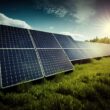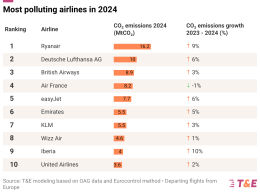Zero-carbon technologies accounted for over 40% of global electricity generation for the first time in 2023 according to a BloombergNEF report.
Renewable energy sources, including wind and solar, contributed 17% of total electricity generation, while hydroelectric and nuclear power provided 24%. Fossil fuels, such as coal and natural gas, generated 57% of global electricity last year.
“We’ve consistently seen the penetration of renewables rising every year, and this year we hit quite a few milestones that had felt harder to reach in past years,” said Meredith Annex, head of clean power at BNEF.
Notably, solar and wind energy comprised over 90% of global energy capacity additions last year, an increase from 2022. Additionally, global wind capacity surpassed one terawatt, and Brazil, with the cleanest power mix among G-20 nations, reached 88% renewable power generation in 2023.
“It just shows the momentum that the space is having. A lot of that does tie into the investment story, where you’ve got rising—skyrocketing, honestly—investment into solar,” Annex said.
Mainland China generated nearly a third of global renewable energy last year. The country achieved its 2030 wind and solar targets six years ahead of schedule and has restricted new coal-fired power plant permits. Analysts are considering whether China will hit peak fossil fuel consumption this year, a key indicator given its status as the world’s largest emitter of greenhouse gases according to the International Energy Agency (IEA).
Despite the rapid growth in renewable energy, current global commitments are insufficient to limit warming to 1.5 degrees Celsius, as outlined in the 2015 Paris Agreement, according to the IEA. Advanced economies would need to cut emissions by 80% by 2035 to meet this target.
At COP28 in December 2023, countries agreed to triple renewable energy capacity by 2030. BNEF forecasts that achieving this goal would require renewable investments to increase to 1.6 times the 2023 levels from 2024 to 2030.
However, this increase has not yet materialised. Global investments in renewables remained roughly consistent with 2023 levels, totaling $313 billion in the first half of 2024, according to BNEF. “We’re expecting steady growth, but steady growth alone will not achieve net zero,” Annex stated.
While U.S. spending on renewables has risen by about 63% compared to pre-2022 levels, thanks to the Inflation Reduction Act’s subsidies and tax breaks, Chinese investment has decreased by 4% from the same period in 2023. This drop is attributed to lower costs for wind and solar equipment, rather than reduced demand, annex informed.
The second half of 2024 will be crucial for the investment landscape, Annex concluded. “Steady growth is a positive sign, but to align with net zero goals, we need to accelerate our efforts.”





















